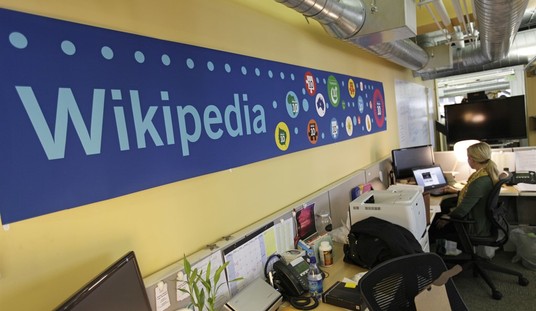Like Iran, they claim they need to do a little light enrichin’ in order to generate fuel for their new light-water reactor. Except … the reactor won’t be ready until 2012 at the earliest, and according to the U.S. nuclear scientist who visited both facilities, there’s reason to believe they won’t finish it at all. Not that it would matter if they did: Nuclear reactors are useful from a weapons standpoint only insofar as they produce plutonium waste, which can then be repurposed into a Nagasaki-type bomb. But the NorKs have already figured that technology out per the two nuclear tests they’ve conducted since 2006. The worry here is that they’re now pursuing a Hiroshima-type bomb based on uranium enriched to 90 percent purity — or, maybe, that they’re thinking of selling that uranium instead to the highest black market bidder.
Those are the basics, but the real bombshell here is the timeline.
The scientist, Siegfried S. Hecker, a Stanford professor who previously directed the Los Alamos National Laboratory, said in an interview that he had been “stunned” by the sophistication of the new plant, where he saw “hundreds and hundreds” of centrifuges that had just been installed in a recently gutted building that had housed an aging fuel fabrication center, and that were operated from what he called “an ultra-modern control room.” The North Koreans claimed 2,000 centrifuges were already installed and running, he said.
American officials know that the plant did not exist in April 2009, when the last Americans and international inspectors were thrown out of the country. The speed with which it was built strongly suggests that the impoverished, isolated country, which tested its first nuclear device in 2006, had foreign help and evaded strict new United Nations Security Council sanctions imposed to punish its rejection of international controls…
“The intel agencies dropped the ball,” said Jack Pritchard, a former State Department official who visited North Korea’s main nuclear complex, Yongbyon, a week before Dr. Hecker’s visit and heard North Korean boasts of a new capability.
A senior intelligence official said Saturday evening that “it is wrong for anyone to assert that U.S. intelligence agencies somehow missed the boat,” adding, “We have been aware of North Korean uranium enrichment activities for years.”
A senior administration official said the North Koreans “very probably have other facilities” that pre-dated the one at Yongbyon and have not been detected.
Do note, the enrichment facility isn’t being built in a bunker inside a mountain. It’s right out in the open, well within view of U.S. spy satellites, housed in a building that’s part of the Yongbyon nuclear complex that America’s been monitoring for years. Not only do they know we’re watching, they clearly wanted us to see it. In which case, unless U.S. intel agencies are irredeemably incompetent — a distinct possibility given their track records in Iraq and Iran — they probably already did know about it and have kept quiet to see how North Korea would play it. One alarming possibility per weapons experts David Albright and Paul Brannan: Could be that the NorKs have other secret enrichment facilities and merely moved the centrifuges from one of those to a public site to get America’s attention, which would help explain the unnerving speed at which they were able to put this whole thing together. (Iran is suspected of having a dozen or more secret sites too.) Remember, not only is centrifuge technology notoriously hard to master, but the actual parts are surprisingly hard to come by. Iran was reportedly reduced to starting its own nuclear black market a few years ago in case neither the A.Q. Khan network nor its native manufacturing capabilities were able to provide the components it needed. If it’s tough for Iran, imagine how much tougher it should be for a country that’s poorer, more geographically isolated, and (like Iran) under UN sanction. And yet, somehow, bam — 2,000 centrifuges installed in 18 months. Unless the equipment doesn’t actually work and was installed merely for show (Hecker’s team was unable to verify that the centrifuges are operable), then clearly they’ve gotten a lot of help from some very knowledgeable allies.
Albright and Brannan wonder whodunnit:
It is also true that a centrifuge plant does not exist in a vacuum. It is still unknown where North Korea researches, develops, and manufactures centrifuges…
Hecker reports on a modern control room at the plant. ISIS learned that North Korean procurement entities obtained abroad modern computerized control equipment used to run a plant composed of centrifuge cascades. This equipment is dual-use, also used in the petrochemical industry, but it was the same as those acquired by Iran to run its centrifuges. ISIS did not learn who more recently supplied the plant with frequency converters or the subcomponents used by North Korea to make them domestically, but Iran and North Korea appear in some cases to use similar illicit procurement networks. It is possible that the North Korean plant(s) could be vulnerable to the Stuxnet worm.
The UN released a long-delayed report just two weeks ago accusing North Korea of transferring missile technology to Iran, Syria, and Burma; China had tried to block the report’s release for six months. Meanwhile, just last month, the Congressional Research Service took a look at how well UN sanctions are working to restrain North Korean proliferation and concluded that “the findings include a stark reminder that U.S. and China interests regarding North Korea are largely incongruent. While the United States presses for elimination of North Korea’s nuclear weapons program, China’s primary focus is on preserving regional stability.” One would think that an arms race in the Far East touched off by new North Korean proliferation would be enough of a threat to “regional stability” to get China to rein in its client state, but maybe the Chinese are calculating that a little instability serves the greater good of expanding their own regional influence by proxy. Their grumbling about U.S. interference in east Asia has gotten louder this year; since they’re the only international actor with any real leverage over North Korea, this new bit of nuclear blackmail by the NorKs gives them leverage over us too insofar as it forces us to seek their help to keep Kim in check.
Or maybe I’m completely wrong and the new enrichment facility is as much a surprise to China as it is to everyone else. That’s … actually more alarming, since it means that there’s really no rational actor providing some sort of check on NorK ambitions. We may find out more about that soon, and not in a good way: Reportedly, Japan and South Korea think a new North Korean nuclear test is in the offing. Exit question: What’s Obama’s move now? Back to the bargaining table to discuss foreign aid, etc, in exchange for denuclearization, or can he simply not afford to show that sort of weakness under the circumstances?








Join the conversation as a VIP Member